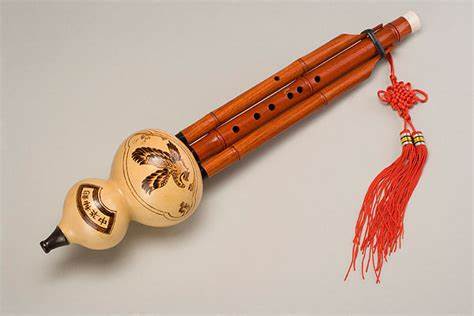Master the artistic technique and practical skills of the contrast between the strengths and weaknesses of hulusi music
As a kind of wind instrument with national characteristics, Fenugreek has a soft and melodious tone. In order to fully display the layered sense and emotional expression of the music, it is very important to master the strong and weak contrast of the music. The following are several key steps and practical skills to systematically improve the ability of strong and weak control in hulusi playing.

1. Basic skills training
Breath control: The basis of strong and weak contrast comes from the precise grasp of breath. When practicing, you need to learn to use your abdomen to exert strength, so that the breath is full but not stiff, the breath is full when playing forte, and the breath is weak and lasting when playing weak note. Acute perception and fine control of breath can be developed through long tone exercises and breath regulation exercises.
Fingering and mouthing: Proper fingering and proper mouthing can help optimize volume output. When playing forte, the finger should press the hole with moderate strength, while the mouth should expand appropriately to enhance resonance; When playing the weak tone, it is necessary to reduce the breath flow, the fingertips touch the sound hole, the mouth is moderately convergent, and the resonance space is reduced.
2. Music analysis and interpretation
Understand the structure of the music: Before starting to practice, deeply understand the theme, emotional changes and structural layout of the music, and determine which parts should be highlighted and which parts need to be delicate, so as to facilitate targeted training of strong and weak.
Mark strength mark: according to the rhythm, melody and emotional ups and downs of the music, mark strong (f), weak (p), crescendo and diminuendo and other strength change marks on the music score, as the instruction of playing.
3. Dynamic deduction and practice
Rhythm and strong match: in the rhythm change of the music into the strong and weak contrast, such as in the strong beat with a strong breath and a larger force of the hole, the weak beat is the opposite. In the music of different rhythm types such as duple time and triple time, the principle of strong and weak contrast is applied flexibly to enhance the sense of rhythm and three-dimensional sense of the music.
Emotional expression: music is the language of emotion, through strong and weak contrast, can make the music more appealing. The strong tone is used in the passionate and high part, and the weak tone is used in the sad and soft part, so that the emotional ups and downs of the music can resonate with the audience.
4. Repeated practice and feedback correction
Slow practice: In the early stage, you can first practice at a slow speed, sentence by sentence, paragraph by paragraph to overcome the difficulty of strong and weak contrast, to ensure that the strength of each note is accurately executed.
Recording playback: Record your own performance through recording equipment, listen to and analyze whether the strong and weak processing is in place, find the shortcomings and adjust in time, so as to continuously optimize the performance effect.
5. Practical application and stage performance
Stage experience accumulation: Participate in various performance activities, feel how to adjust and control the strength of music in different venues and different atmospheres through live performance, so as to make the performance more on-site and artistic tension.
To sum up, mastering the contrast between the strengths and weaknesses of hulusi music requires not only a solid foundation, but also a deep understanding and artistic treatment of the music. Only through continuous practice, reflection and practice, can we skillfully show the rich levels and moving emotions of the music in the hulusi performance.
 渝公网安备 50010702504639号
渝公网安备 50010702504639号